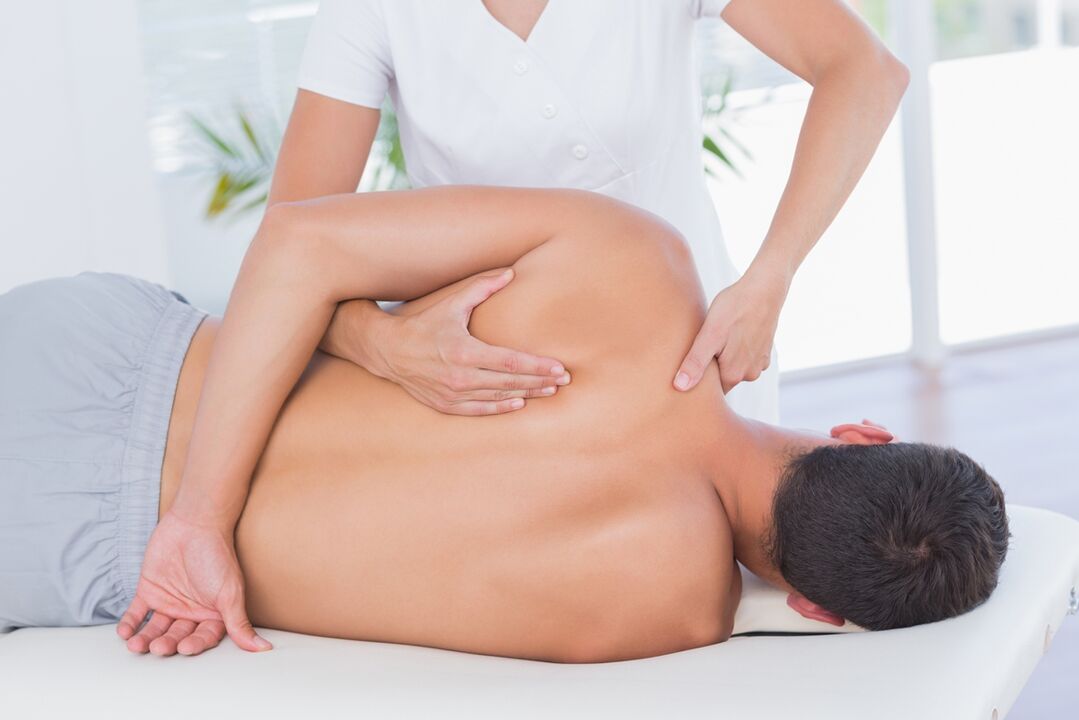Pain in the back of the left shoulder from the back is a symptom found in both older people and young people. Muscle tension after physical exertion or chronic kneeling can cause discomfort. The concentration of pain from the back to the back indicates not only diseases of the musculoskeletal system: there may be problems with the organs of the chest and abdomen. If discomfort increases under the scapula on the left side, it is necessary to consult a specialist.

Anatomical features
The support is closely connected with the throat bone, forming the clavicular-scapular joint. On several sides, the coastal arches and the axis of the spine are attached to the shoulder blades. The listed bone formations retain the shape of the chest and spine.
The lungs and heart are at the level of the thoracic segment of the spine. Problems with these organs can be caused by pain. Also, discomfort arises due to squeezing of the spinal cord nerve roots located in the spinal canal (next to the shoulder blades).
Causes of discomfort in the area of the scapula
There are 5 main groups of causes of pain:
- Diseases of the musculoskeletal system: variants of intercostal neuralgia, arthritis of the shoulder joint, tumors. Degenerative-dystrophic changes of the spine can be a provoking factor - osteochondrosis, hernia, rash, myositis.
- Cardiovascular diseases: angina pectoris, myocardial infarction, infections of the heart layers (myocarditis, pericarditis, endocarditis).
- Pathologies of the broncho-pulmonary system: bronchitis, inflammation of the lungs or pleura, tuberculosis.
- Gastrointestinal problems: chronic pancreatitis, peptic ulcer disease, splenic damage.
- Damage to the scalp of various origins: trauma, inflammation, tuberculosis.
How to get rid of pain on the left side under the back
If the diagnosis has already been confirmed by a doctor (osteochondrosis or chronic pancreatitis), it is necessary to follow the previously given recommendations.
Muscular and muscular diseases in the acute stage require the use of pain relievers and anti-inflammatory drugs. You should pay attention to the use of warming ointments: apply the drug in a strictly scapular area, without affecting the projection of the heart. Otherwise, you may experience a rapid heartbeat and rhythm disturbance.
Chronic pancreatitis or peptic ulcer disease requires a special diet, taking enzymes or antiepileptic drugs according to the scheme.
Any discomfort forces you to reduce physical activity: the patient has shown rest. It is recommended to choose an orthopedic pillow and mattress for sleeping.
ᲛImportant! If subcutaneous pain in the left shoulder causes a change in body position and does not subside during rest, you should immediately consult a doctor to rule out acute myocardial infarction.
Possible diseases
List of diseases accompanied by pain symptoms:
- Bursitis- Inflammation of the periarticular shoulder sac. Due to injuries or excessive load, the soft tissues swell, putting pressure on nearby muscles, tendons, tendons. Unpleasant sensations when raising the hand will gradually turn into a severe pain syndrome, which is manifested in a dream. Bacterial (septic) bursitis is the result of a mucosal infection. It is characterized by a rise in temperature, redness of the skin of the shoulder, severe pain.
- Osteochondrosis of the chest region.Degenerative changes in the structure of the intervertebral discs lead to muscle spasms, tingling of nerve roots, clogging of blood vessels. The clinical picture begins with a slight tingling sensation in the chest or spine. Increasing discomfort is accompanied by loss of sensitivity of the fingers and shoulder girdle.
- Intervertebral hernia.Destruction of the cartilaginous capsule of the intervertebral disc has more pronounced clinical manifestations. Paresis and paralysis of the upper extremities are noted. Growing herniated discs are often complicated by mild or moderate neuropathic pain. The peculiarity of such pain is the lack of effect in the background of taking nonsteroidal anti-inflammatory drugs.
- Myositis.Inflammatory process of skeletal muscle resulting from infections or injuries. The most severe form of the disease is ossification of the subcapsular muscles (ossification of muscle tissue).
- Angina pectoris- An abnormal condition accompanied by a deficiency in the blood supply to the heart muscle. Angina pectoris is characterized by back pain under the left shoulder, acute spasmodic pain in the back of the sternum. Acute stress, smoking, alcohol abuse trigger an attack.
Diagnosis
Western medicine with the help of hardware diagnostics addresses the problems of the musculoskeletal system. To make a final diagnosis, the patient must go through:
- Radiography of the cervix and thoracic spine.
- Ultrasound bursitis shows excess fluid in the synovial joint capsule.
- პიუComputed tomography.
- Magnetic resonance imaging.
If a patient is suspected of myositis, a detailed blood test is needed to confirm the inflammatory process.
If cardiac pathology is present, allopathies are suspected by the following examination methods:
- Electrocardiogram.
- Blood test to determine myocyte necrosis factors.
- Cardiac ultrasound.
Disease treatment and prevention
Therapies and doses vary according to the form and severity of the disease.
- Pathology of the musculoskeletal system requires the appointment of non-steroidal anti-inflammatory drugs (to relieve pain), the appointment of muscle relaxants, vitamin complexes. In difficult clinical cases, Western doctors recommend the elimination of pain syndrome by hormonal means. Minimally invasive shoulder surgery is often used to treat bursitis.
- Myositis is treated with warming gels and ointments, anti-inflammatory agents. Physiotherapy is recommended during remission. In severe pain, allopathies block novocaine.
- Angina attacks are stopped with nitrate-like compounds. According to medical protocols, patients need injections of blood-thinning drugs to prevent blood clots. Patients taking antihypertensive pills for high blood pressure. In order to normalize the rhythm, doctors prescribe antiarrhythmic drugs. They also recommend taking cholesterol-lowering drugs, metabolic therapy.































